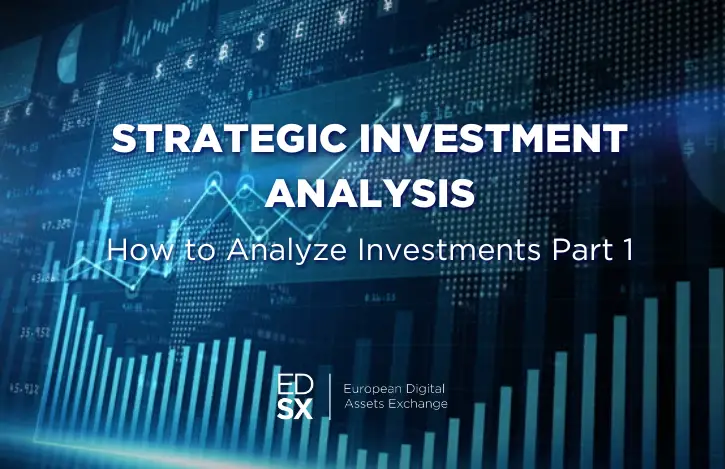In today’s volatile market environment, investment analysis has taken on new significance. With economic uncertainty and rapidly shifting conditions, conducting thorough due diligence on investment opportunities is more important than ever for individual investors to make well-informed choices. Research shows nearly 80% of Americans actively manage some portion of their own retirement savings, underscoring the necessity of mastering strategic investment analysis as a core skill. By following some basic analytical practices, investors can better navigate changing markets and protect the long-term health of their portfolios.
The Benefits of Investment Analysis
Investment analysis provides several key benefits for investors. It helps in evaluating potential risks and returns, creating a diversified portfolio, identifying undervalued opportunities, and understanding existing investments. Specific benefits include:
- Helps evaluate risks and potential returns associated with investment opportunities based on analyzing market and financial data.
- Enables creation of a diversified portfolio tailored to an individual’s needs, goals and risk tolerance by analyzing different investment prospects.
- Helps identify undervalued investments the market may have overlooked by analyzing company fundamentals, industry trends and management quality.
- Allows understanding of how existing investments are performing and how they fit into an overall portfolio by assessing market indicators and investment metrics.
Thorough investment analysis provides a foundation for well-informed investment decisions and effective long-term portfolio management.
Strategic Considerations in Investment Evaluation and Analysis
When evaluating investments, factors like expected returns, risk profiles, costs, and portfolio fit should be considered. Investment analysis allows matching different holdings to an individual’s specific situation and risk tolerance. For example, when comparing mutual funds, an investor would be wise to look at past performance against benchmarks, manager tenure, fee structures, and asset allocations. Regular reviews reveal whether original strategies aligned with evolving goals or if adjustments are now prudent.
Rather than acting on instinct alone, investment analysis provides useful context. By gauging economic indicators, capital market trends, and company fundamentals, investors can build a clearer picture of potential upsides and downsides. Well-researched investment theses help brace for unexpected events too. Conducting due diligence periodically ensures portfolios hold appropriate levels of diversification across sectors to mitigate risks over full market cycles.
While prediction poses challenges given unknown variables, keeping apprised of changing conditions through investment analysis aids strong long-term decision making. An adaptive, research-based approach serves investors better than reactions to headlines alone. Resources from Dimson, Marsh, and Staunton’s Annual Review of Financial Markets to individual company 10-K filings offer a wealth of investable intelligence for those proactive in self-directed planning.
The Importance of Investment Analysis in a Changing Market
Investment analysis has taken on new significance in today’s volatile market environment. With economic uncertainty and rapidly shifting conditions, conducting thorough due diligence on investment opportunities is more important than ever for individual investors to make well-informed choices. Research shows nearly 47% of Americans actively manage some portion of their own retirement savings, making investment analysis a core skill. By following some basic analytical practices, investors can better navigate changing markets and protect the long-term health of their portfolios.
Learn More about Investment Analysis
This article provided an overview of the importance of strategic investment analysis and highlighted some key benefits. In upcoming articles, we will delve deeper into different types of investment analysis methodologies. These include fundamental analysis, which examines underlying company financials and metrics. Technical analysis focuses on price trends and momentum indicators. Top-down and bottom-up approaches look at the macro picture then drill down, or start with individual stocks before incorporating broader views. Mastering various analytical frameworks equips investors with versatile tools for navigating diverse market conditions. Stay tuned for more in-depth explorations of these valuable investment analysis techniques.
This marks the conclusion of the initial installment in our comprehensive series on investment analysis. Stay tuned for upcoming articles delving deeper into various methodologies, equipping you with versatile tools for navigating diverse market conditions.

Based in Zug, the platform is fully compliant with all Swiss laws related to financial intermediaries, banking, anti-money laundering, and organized trading facilities. Among its core values, there are innovative solutions through blockchain technology, which ensures security and liquidity.
EDSX is the first platform in Europe with primary and secondary markets for both institutional and retails. EDSX is a pioneering platform that employs the world’s leading technology to globally list security tokens in both primary and secondary markets, listing digital securities of real financial instruments to the public with a decentralized peer-to-peer exchange. Our goal is to fully engage every aspect of the financial revolution.
Do you have a question for us?
Send your query here:
[email protected]

